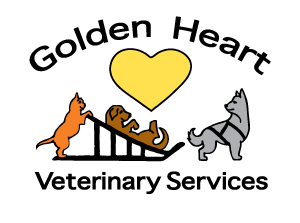Illustrated Articles
-
The easiest way to give your dog liquid medication is to mix it in with some canned food. In some cases, this is not possible, and you will have to administer the medication directly into your dog's mouth using a syringe. Before starting, make sure you prepare the syringe with the correct amount of medication. If the medication was refrigerated, you may want to warm it up by holding the syringe tightly in your hand for a minute or two. It may be helpful to have someone assist you the first few times you administer the medication. Detailed directions for administering the medication are provided in this handout. Be sure to offer your dog lots of praise and offer a treat or extra playtime after giving the medication.
-
Giving pills to cats can be a challenge, even for the most experienced veterinarian! The easiest way to give your cat a pill is to hide the pill in food. Some cats will always find the pill and spit it out, so you may need to administer it directly into your cat's mouth. This handout provides a step-by-step guide to do this, along with some other options if it is still too difficult.
-
Giving pills to dogs can be a challenge, even for the most experienced veterinarian! The easiest way to give your dog a pill is to hide the pill in food. Some dogs will always find the pill and spit it out, so you may need to administer it directly into your dog's mouth. This handout provides a step-by-step guide to doing this at home.
-
This handout describes the benefits of performing examinations at home between regularly scheduled veterinary visits. It outlines the different parts of the body to examine, how to examine and what to look for as abnormals.
-
Grooming a cat can be a challenge to many people. Depending on coat/hair type, medical conditions, and lifestyle factors, some cats will need different levels of grooming care than others. A well-groomed cat is a sign of overall good health, and regular grooming can help you notice problems early on.
-
Grooming your dog can be a fun chore or a challenging one for many people. Depending on coat/hair type, medical conditions, and lifestyle factors, some dogs will need different levels of grooming care than others. A well-groomed dog is a sign of overall good health.
-
Bad breath (halitosis) is caused by bacteria, plaque, tartar, decomposing food particles, or death of tissue. Treatment of halitosis in cats involves eliminating the cause(s). The teeth need to be thoroughly cleaned and polished under general anesthesia. Teeth affected by advanced periodontal disease or tooth resorption need to be extracted. Reducing the accumulation of plaque, tartar, and resulting halitosis can be achieved by using VOHC-accepted products.
-
Bad breath (halitosis) is caused by bacteria, plaque, and tartar. Once halitosis occurs, professional veterinary oral prevention, assessment, and treatment is needed. Teeth affected by advanced periodontal disease need to be extracted. Reducing the accumulation of plaque, tartar, and resulting halitosis can be achieved by using VOHC-accepted products.
-
Halloween can be fun for the whole family including pets but it can also be a scary or dangerous time for pets. Costumes, candy, and noises can cause multiple problems such as stress, poisoning, and anxiety that may cause them to run away or react aggressively. Keep them in mind when planning your holiday and talk to your veterinarian if you need help with anxiety issues.
-
Hand-raised babies usually make better pets, as they have been completely socialized with humans. Hand-feeding is a job best left for the experienced bird breeder or aviculturist. If you are considering hand-feeding a baby bird, you should contact your local bird breeder or avian veterinarian for help. This article provides general guidelines and best practices.
